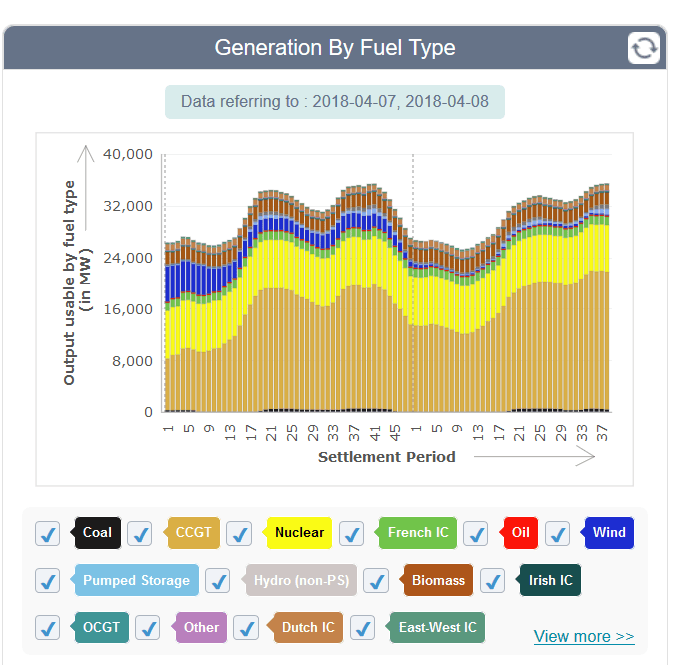It takes a ‘special’ kind of person to still believe that a country can run itself on sunshine and breezes.
Idolatry, zealotry, and good old-fashioned pig ignorance are worn like badges of honour amongst the wind and sun cult.
Claims range from the ‘wind is always blowing somewhere’, ‘wind power is cheaper than coal’, and ‘competitive’ with everything under the sun blah, blah, blah.
Another mantra is that, either wind power receives no subsidies at all or, if that’s grudgingly conceded, then the subsidies to wondrous wind dwarf those shoveled out to evil fossil fuels. (On the latter they struggle to come up with a shred of evidence to support their case, and ignore the fact that coal miners and gas extractors all pay very substantial sums in royalties to governments.)
True it is that the manner in which subsidies are filched from unwitting power consumers and siphoned off to wind power outfits is as mysterious as it is sophisticated. However, the endgame is pretty simple: separate taxpayers and/or power consumers from billions of their hard-earned currency and transfer it to the operators of a power source abandoned centuries ago, for pretty obvious reasons. (Known to kite flyers and sailors, since the beginning of time).
Here’s Paul Homewood detailing how the scam works in the UK.
Wind Power – A Few Facts
Not a Lot of People Know That
Paul Homewood
8 April 2018
Bear with me, as this is a bit of a recap on wind power, to fulfil a couple of objectives.
I sometimes get asked how the subsidy scheme works for renewable energy.
Onshore
Most onshore wind generators (about 85% of capacity) operate under the Renewable Obligation system.
Renewable Obligation certificates (ROCs) are issued to operators of accredited renewable generating stations for the eligible renewable electricity they generate.
The number of certificates per unit of electricity varies by technology, but onshore wind earns on average ROCs worth £47/MWh.
Energy suppliers have an obligation to source a certain proportion of their electricity from renewable sources each year, and therefore need to purchase these certificates to demonstrate that they have met their obligation.
On top of the income from ROCs, wind farms also receive the value of electricity sold, typically about £45/MWh.
Smaller generators are paid via the Feed in Tariff scheme (FIT). Rates vary according to the capacity of the unit, but the total subsidy budgeted this year for FITs is £1.5bn. Although this includes solar, anaerobic, CHP and certain hydro projects, a large chunk will go to wind farms.
The ROC scheme was ended for new applicants in 2015, although generators already covered will remain so for their lifetime. Several new projects since have successfully applied for subsidies under the Contracts for Difference (CfDs) system, which has replaced ROC.
These schemes will receive a guaranteed price, index linked for 15 years, currently ranging from £88.37/MWh to £91.94/MWh. Given the market price of £45/MWh, this is effectively a subsidy of between £43 and £47/MWh. In other words, a similar amount to the ROC subsidy.
Following the 2015 election, the government has withdrawn onshore wind from further CfD auctions, but there is pressure from the renewable lobby to reverse this decision.
Last year, onshore wind produced 28.7 TWh, at an estimated subsidy of £1.4bn.
Offshore
There is currently 7.0 GW of offshore wind capacity, of which 6.3 GW is covered by ROCs. On average, they receive 1.9 ROCs per MWh, worth £90/MWh.
Again this is on top of the market price of £45/MWh, so they receive total income of about £135/MWh.
There is also 0.7 GW of capacity covered by CfDs, which currently pay a guaranteed price of £166.59/MWh.
Last year offshore wind generated 20.9 TWh, at an estimated subsidy of £2.0bn.
By 2023, there will be 7.5 GW of offshore capacity under CfD contracts, at an average price of £117/MWh. This will cost electricity bill payers an extra £1.8bn in subsidies.
Intermittency
Despite these obscene subsidies, wind power is highly variable. Today, for instance, wind power has been virtually non existent, currently amounting to just 171 MW, less than 1% of capacity.

This means that standby capacity has to be kept in reserve. By 2020/21, this will be costing £1.3bn in capacity market payments.
In all, subsidies for wind power and standby will be costing the country more than £7bn a year, equivalent to about £270 per household.
Not a Lot of People Know That



I’m sure that STT and others will be on to this. The links below were recently sent to me from a family member living overseas.
And I quote…
Legal action taken on wind turbine noise
It has finally happened!
Using a “private prosecution,” Wind Concerns Ontario has served the Honourable Chris Ballard, Minister of MOECC with a summons for violating the EPA (Environment Protection Act).
The issue is related to the lack of proper follow-up on the thousands of noise complaints filed by individuals throughout the province in locations where industrial wind turbines have been erected.
The complaints date back to 2006 and have continued without any significant attention from the Ministry and have even caused families to abandon their homes in order to seek relief from the noise effects.
Mr Ballard has been Environment Minister since August 2017, and complaints have continued, without resolution.
Read the press release on Wind Concerns website here:
http://www.windconcernsontario.ca/ontario-environment-minister-served-with-summons-on-violation-of-the-environmental-protection-act/
Ontario Environment Minister served with summons on violation of the Environmental Protection Act
“We had no choice” : Wind Concerns Ontario on taking legal action regarding wind turbine noise reports
NEWS RELEASE
Citizens’ group charges Environment Minister with violation of Environmental Protection Act
May 1, 2018, Toronto, 10:00 EDT – The president of Wind Concerns Ontario (WCO), a volunteer-led coalition of 30 community groups and many Ontario families, has filed a private prosecution against the Honourable Chris Ballard, Minister of the Environment and Climate Change (MOECC), for violating Ontario’s Environmental Protection Act (EPA).
Private prosecutions are important tools in empowering private citizens to hold those persons in power to account.
The EPA prohibits anyone from permitting the “discharge of a contaminant into the natural environment, if the discharge causes or may cause an adverse effect.” Adverse effects listed in the EPA include “an adverse effect on the health of any person,” “harm or material discomfort to any person” and “loss of enjoyment of normal use of property.” (Section 14 subsections 1 and 2)
“We don’t take this step lightly,” says Jane Wilson, WCO President and a Registered Nurse, “but with the MOECC not responding to thousands of reports of excessive noise from wind turbines, which is affecting sleep and health for Ontario families, we had no choice. These are examples of adverse effects that Minister Ballard should not be permitting to continue.”
WCO recently received MOECC documents under a Freedom of Information request that showed thousands of unresolved reports of noise, many with staff notes about sleep disturbance and health impacts. Between 2006 and 2016, there were more than 4,500 recorded reports, 35% of which contained staff notes about adverse health effects; between 2015-2016, the MOECC response rate to the reports of excessive noise was less than 7%.
“Citizens report going without sleep for days, weeks, even months,” said Wilson. “Sleep disturbance is linked to other health problems such as high blood pressure and diabetes. Mr. Ballard, as steward of environmental protection in Ontario, is responsible for allowing this environmental noise pollution to continue.”
On April 30, 2018, Mr. Ballard was served with a summons to appear before the court on May 17, 2018.
Excerpts from Ontario resident wind turbine noise reports:
“You have done nothing to help myself or my family. How many times [do we have to complain] before the MOECC will do something?”
“Another week has passed with no response from you. It has been terrible here off and on the past week …continue to be unable to get a good night’s sleep.”
“When will you reopen our file and help us?”
“We just want to sleep…”
“After a week of east wind and no sleep in our house this has become intolerable … it is up to you to address this”
End quote.
More details can be found on the actual website.
Reblogged this on "Mothers Against Wind Turbines™" Phoenix Rising….
Reblogged this on UPPER SONACHAN WIND FARM and commented:
Tip of the iceberg info for which STT is once again to be congratulated. Negative effects on the environment plus upon human and animal/wildlife health can also be found through the peer reviewed work now available. See the Waubra Foundation’s website and http://www.windsofjustice.org.uk for evidence. Please note that the World Health Organisation is now ignoring all requests to explain why their 2017 Noise Guidelines have never been released. These guidelines were due to address noise from wind turbines for the first time.
Reblogged this on Climatism and commented:
“In all, subsidies for wind power and standby will be costing the country more than £7bn a year, equivalent to about £270 per household.”
SKYROCKETING power bills, energy poverty and the decimation of pristine landscapes, all to feed the egos of climate theory obsessed politicians and line the pockets of rent-seeking, subsidy-sucking mega-green corporations.
CO2 reductions for all this pain? ZERO, actually increased emissions as more fossil-fuel energy sources are needed to cover for the times when the wind don’t blow and the sun don’t shine! 🤦♂️
STUDIES: Wind Power Installation Amplifies The Growth Of Fossil Fuel Energies https://shar.es/anXezw